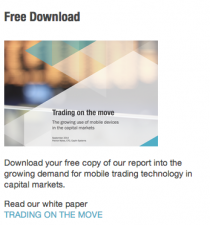For those who are not completely familiar with the 848 pages of the Dodd-Frank act there’s a very useful summary of just how the “confused, bloated law” is progressing in this week’s edition of The Economist.
According to the article only the Chinese regulators and The Economist’s US correspondent have actually read all 848 pages, so this article could be handy for many of us. I’m not including Paul Blank of course – as you know his regular contributions to this blog indicate that while he may not have read all 848 pages, he is intimate with much of the content and its implications.
Surprisingly there are some areas affected by Dodd-Frank that are outside investment banking – including the extraction of minerals from in and around the Congo – which the article suggests could cost firms involved as much as $16bn! This from an act that was originally intended to improve the regulation of the investment banking industry. Hard to see the connection there.
The Economist concludes that implementing this mammoth piece of legislation is likely to make investment banks less responsive rather than more. It quotes Jamie Dimon of JPMorgan Chase as saying that the direct cost of Dodd-Frank to the bank could be as much as $600m a year*. Wow! Wouldn’t that money be better being invested in commerce and industry?
The article goes on to suggest that perversely the Dodd-Frank act, by trying to regulate in minute detail, may actually create more trading opportunities than it eliminates, while it fails to achieve its original objectives:
… in this case (the act) is leaving the roots of the financial crisis under-addressed – and more or less everything else in finance overwhelmed.
Worth a read IMHO.
*The original print edition claimed that Mr Dimon used a figure of $600bn. This was corrected in the electronic edition to $600m – still a big number, just not so enormous!
Filed under: Dodd Frank, Mike Hill, Regulation, SEF, Single-Dealer Platforms |



Leave a comment